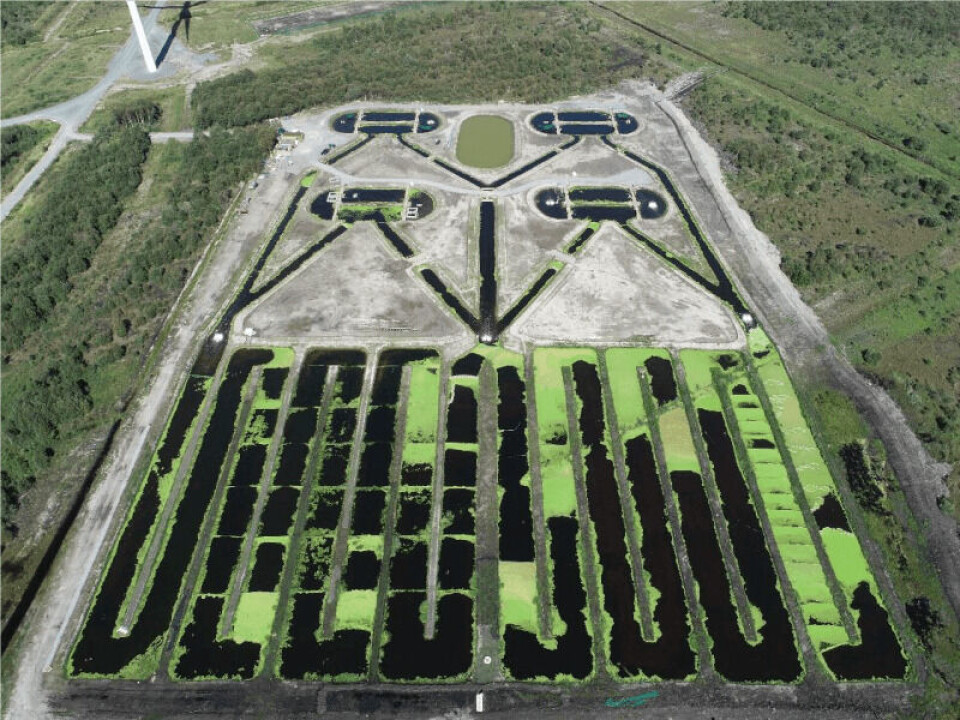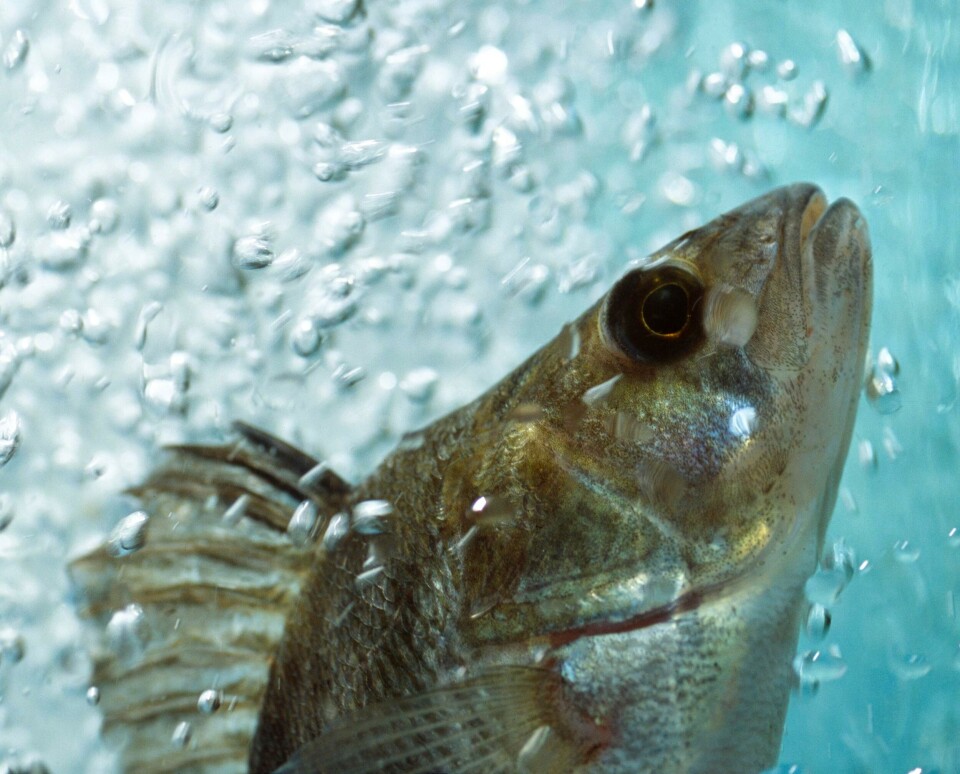
Peat bog fish farm does the spadework for sustainability
A project investigating the possibility of growing trout and perch in ponds in former peat extraction land in Ireland is seeing good results halfway through a two-year experiment.
The project at Mountlucas windfarm in the Irish Midlands uses a recirculating aquaculture system with a difference. Water is channelled from fish ponds to other ponds containing duckweed, which acts as a filter by taking up the nutrients from the fish.
“The fish have done very well, particularly the trout,” said Damien Toner, who is working on the project for Ireland’s seafood development agency, Bord Iscaigh Mhara (BIM).

Organic principles
BIM is partnering with Irish power generator Bord na Móna (peat board) on the project, which forms part of the company’s decarbonisation strategy. After decades in which 80,000 hectares of peatland was harvested for fuel, Bord na Móna is going green by using the land – known as cutaway bog - for wind farms and wants to find uses for the large areas between the turbines.
An advantage of peatland-based aquaculture is that it harnesses water from rivers and lakes and doesn’t have the possible threats from potential pollutants in raw, untreated wastewater such as agricultural run-off.
The fish farm project is being managed using organic principles by Kilkenny trout grower Goatsbridge Trout Ltd, and University College Cork (UCC) is applying its knowledge in the area of cultivating duckweed, the world’s fastest growing plant. Ireland’s only European perch hatchery, Keywater Fisheries, is supplying the perch.
The emphasis is on creating a balanced system in the four 1,000m³ fish ponds, which were created using a natural glacial till. The duckweed area is 1.2 hectares, linked by channels to the pond. The full volume of water is exchanged every four hours.

Paddle aerators
Paddle aerators linked to an oxygen sensor system provide oxygen for the fish when needed. Algae produce enough oxygen during the day in the summer months.
Power for the project comes from one of the turbines on the wind farm where the ponds are sited.
The fish are given an organic feed imported from France. Toner says sedimentation is not an issue because of low stocking density and natural organisms that break the waste down.
Like any RAS, the system has to be very well managed, says Toner, but the system allows a bigger margin for error than most. “If an aerator fails, you probably have four to five hours to address the problem,” he says.
Topped up by rainfall
Among the many green boxes the project ticks is low freshwater use, with any additional water requirements normally taken care of by the Irish weather, although “we did have to top up the system twice because of low rainfall” says Toner, an aquatic science graduate.
The project has a licence for 25 tonnes of fish, which works out at 140,000 perch and 12 tonnes of trout on site.
There’s potential for more such sites on Bord na Móna land.
The project may also offer knock-on effects for other types of fish farming.
Mitigate disease
A team of researchers from Athlone Institute of Technology’s Bioscience Research Institute is co-operating with the project to investigate the use of naturally occurring microalgae to help mitigate disease and improve fish health.
“We will be conducting the first studies on novel extraction of immune-stimulating bioactives and nutrients from these microalgae to see if they can be used to support a healthy fish population,” said Dr Emma Jane Murphy, a lead postdoctoral researcher at the Institute.
Toner believes the system is keeping fish healthy by providing a natural source of probiotics.
“There is a natural balance in the system. There is plenty of stuff growing in the water that the fish are eating, but that is only anecdotal,” he stresses.
Duckweed for feed
The duckweed, too, may have a wider impact on fish farming.
“It can double every 24 hours, and is quite an interesting species to grow,” he says.
“Its primary purpose is to take up nutrients from the fish, but it could be utilised for animals feeds.”
Toner and his colleagues have just started looking for uses for it.
“We would be interested if fish feed companies want to look at it as an alternative protein. It could be used for insect feed, too.”






















































